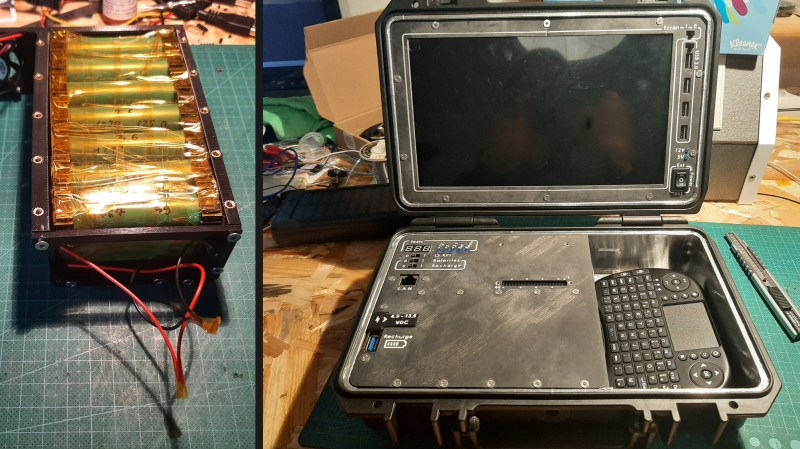Cyberdecks are all about custom builds, and [f4drj]’s YAHRC (Yet Another Ham Radio Cyberdeck) takes its ruggedization and power seriously. There are some great power management features, and the enclosure even has a layer of RF shielding.
YAHRC is a Raspberry Pi-based build with a generously-sized screen that tucks a small Bluetooth keyboard into a storage area for input in a pinch. Everything is secured behind custom panels, and behind those panels are some really great build details. There’s active cooling via fans, an SSD for data, and [f4drj] even made a custom riser for the GPIO header by soldering together a couple of headers to act as an extender. This exposes the GPIO header right beside a clear area for prototyping, with easy access to USB ports next to the screen in the top panel.

The power features are worth mentioning separately. For starters, there’s a very generously sized internal battery pack made from spare 18650 cells that gives this deck more than enough juice for any conceivable job. The screen, USB hub, and Raspberry Pi can each be individually powered or turned off as needed; even the internal battery can be isolated from the rest of the hardware.
As an alternative to the huge internal battery, the unit can be powered from an external 5 VDC source or any external power ranging from 3.8 to 32 VDC, such as a solar panel. Clearly, there’s a lot of focus on providing the user with flexible power options to account for any situation.
This build is chock full of thoughtful design bits, so be sure to look through the photo gallery. You might come away with inspiration or even a few tips!

















An old floodlight with cooling fins could be a nice passive cooled case.
Of course you have to solder a piece of copper to bridge the distance to the CPU.
Hi, you are right, indeed it was a good option but I was running out of space. Active cooling was a quick win solution. I improved cooling with custom PNP/NPN/MOSFET driver based on RPi CPU temperature driven by python script throught GPIO. Therefore, the fan does not run in TTL but is in fact PWMed.
I love the attention to detail in this Cyberdeck. The RF shielding is a nice addition. I wonder how it would do as a Faraday cage, in case of an EMP.
Store it in an ammo box with RF gaskets?
Hi, the test is scheduled. Keep in touch.